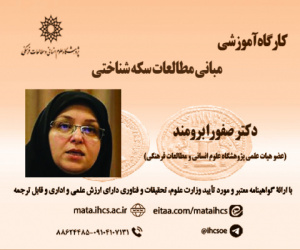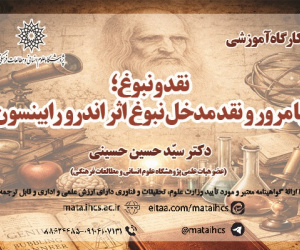ضرورت تصحیح مجدّد ترجمه یمینی (مقاله علمی وزارت علوم)
درجه علمی: نشریه علمی (وزارت علوم)
آرشیو
چکیده
الیمینی نوشته ابوالنّصر محمّد بن عبدالجبّار عتبی (د: 427ق) یکی از مهم ترین سرچشمه ها در شناساندن تاریخ روزگار زندگانی فردوسی و دوران فرمانروایی سامانیان و زیاریان و بوییان و غزنویان است. هرچند نویسنده این تاریخ گهگاه در ستایش محمود غزنوی راه افراط پیموده است، نمی توان ارزش های تاریخی و آگاهی های سودمند این متن را نادیده گرفت.ترجمه کهن این متن به دست ابوالشّرف ناصح بن ظفربن سعد جَربادقانی یکی از ارزشمندترین و گران مایه ترین متون نثر فنّی زبان فارسی است که به بهترین شیوه، راه مترجم کلیله ودمنه را پیموده است. چنان که الیمینی یکی از برجسته ترین متون تاریخی است، ترجمه آن نیز یکی از استوارترین متون نثر فارسی است. ناصح بن ظفر افزون بر ترجمه متن، در آغاز و پایان کتاب به تاریخ اواخر دوره سلجوقیان عراق پرداخته است. خوشبختانه از الیمینی و ترجمه ها و شرح های آن، دست نویس های پرشماری برجای مانده است که ما را در راه رسیدن به متن اصلی ترجمه رهنمون است. در این مقاله، ضمن معرفی و تحلیل بیش از بیست دست نویس کهن و برجسته ترجمه یمینی و با بیان کاستی های تصحیح قدیم این متن و سنجش آن با تصحیح جدید، به اثبات ضرورت تصحیح مجدّد این متن پرداخته خواهد شد. همچنین، دلایل برتری ضبط های تصحیح جدید نسبت به تصحیح قدیم تر نیز بیان می شود.The Necessity of Re-Editing Yamini's Translation
Al-Yamini authored by Abu al-Nasr Muhammad ibn Abd al-Jabbar Utbi (d. 427 AH), is a vital source for understanding the historical context of Ferdowsi's era, as well as the periods of the Samanids, Ziyarids, Buyids, and Ghaznavids. While the author sometimes indulges in excessive praise of Mahmud of Ghazni, historical significance and insightful content of the text are undeniable. The early Persian translation by Abu al-Sharaf Nasih ibn Zafar Jurfadeqani stands out as one of the finest examples of refined Persian prose, skillfully mirroring the style of Kalila wa Dimna. Just as the original Al-Yamini is recognized as a significant historical work, its translation can be regarded as a paragon of Persian literary excellence. Jurfadeqani also provides valuable historical insights into the later Saljuq period in Iraq within the introduction and conclusion of the book. Fortunately, a considerable number of manuscripts of Al-Yamini, along with its translations and commentaries, have survived, facilitating scholars in reconstructing the original text. This article offered an introduction and analysis of over 20 distinguished early manuscripts of Jurfadeqani's Persian translation of Yamini. It also assessed the shortcomings of previous editions and, through a comparison with more recent editions, advocated for the need for a revised version. Additionally, it highlighted the superior readings found in the newer edition compared to earlier ones.
Keywords: Al-Yamini, Translation of Yamini, Translator, Nasih ibn Zafar, Manuscript.
Introduction
Al-Yamīnī, also referred to as Muʿjiz al-Kuttāb wa Muḥriz al-Ādāb, is a significant historical text in Arabic that provides extensive information on the history and geography of Iran. A substantial portion of this work is dedicated to the biographies of Mahmud Ghaznavi and his father, Sabuktigin. Since its composition, numerous insightful commentaries in Arabic have been produced over the centuries, further enriching the understanding of this important text.
Materials & Methods
The initial phase of the scholarly critical editing of the text—central to my Ph.D. dissertation—involved gathering information on manuscripts through extensive searches of domestic and international library catalogs and websites. Subsequently, I collected photographs of these manuscripts, identified various features, and categorized them according to their authenticity, value, and reliability.
Approximately 70 manuscripts of the Al-Yamīnī translation were identified, with 10 dating back to before 750 AH. After a thorough examination and analysis of these manuscripts, those that were merely copies or derivative versions were excluded from the critical editing process. The Shahid Ali Pasha manuscript was selected as the base text for the critical edition; however, it contained occasional inaccuracies and thus could not be considered definitive. The differences between this manuscript and 4 other authoritative (non-base) manuscripts were detailed in the footnotes using specific symbols and abbreviations for clarity.
Research Findings
The research on Al-Yamini, particularly its Persian translation by Abu al-Sharaf Nasih ibn Zafar Jurfadeqani, revealed significant insights into historical texts and manuscript studies. The key findings were as follows:
Historical Significance: Al-Yamini was crucial for understanding the history of the Samanids, Ziyarids, Buyids, and Ghaznavids and it provided an extensive biography of Mahmud Ghaznavi.
Manuscript Availability: A wealth of manuscripts existed with approximately 70 identified, including 10 from before 750 AH. This included valuable manuscripts from the Saljuq period, which enhanced the historical context of the translation.
Critical Editing Process: The research emphasized a systematic methodology for critical editing, involving the collection and analysis of various manuscripts. The Shahid Ali Pasha manuscript served as the base text with careful consideration given to discrepancies with other authoritative manuscripts.
Linguistic and Stylistic Features: The study highlighted the importance of diacritical marks in understanding the linguistic nuances of the text. The use of contemporary punctuation and orthography in the edited version aimed to enhance readability and accuracy.
Comparative Analysis: The research included a comparative analysis of historical events in Al-Yamini with other Persian and Arabic texts, contributing to a broader understanding of the historical narrative.
Deficiencies in Previous Editions: The article identified shortcomings in earlier editions, advocating for a revised edition that incorporated detailed footnotes and indices, which would support scholarly work in this area.
Future Directions: The aim was to produce a definitive critical edition that not only corrected inaccuracies, but also enriched the text through comprehensive commentary and analysis of manuscript variations.
In conclusion, the research underscored the importance of rigorous manuscript studies and critical editing in the preservation and understanding of historical texts like Al-Yamini.
Discussion of Results and Conclusion
The book Al-Yamīnī and its early Persian translation were fortunate to possess a wealth of surviving manuscripts. Specifically, there were 12 manuscripts of the Al-Yamīnī translation that dated back to before 800 AH. Notably, one of these—the manuscript held by the Turin Academy of Sciences dated 789 AH—was reportedly lost in a fire in 1904 CE and was no longer extant.
Additionally, 9 manuscripts from the period of 800 to 1250 AH were available, 7 of which were independent and valuable. Furthermore, there were 23 manuscripts dating from 1251 to 1272 AH, 8 of which emerged after the lithographic printing of the text in 1272 AH. It is noteworthy that historical works, such as Jami' al-Tawarikh and Rawdhat al-Safa, had summarized and ed this translation in their sections on the Samanids and Ghaznavids.
While numerous ancient versions of the Al-Yamīnī translation existed, the more recent versions (800-1200 AH) had not to be overlooked. Our examination revealed that manuscripts created after 1200 AH were generally copies of older manuscripts, the originals of which were still available. The manuscripts predating this year with the exceptions of the Arif Hikmat and Topkapi manuscripts were predominantly authentic though they might share connections or a common archetype with others.
In authoritative manuscripts, such as those from the Shahid Ali Pasha, Central Library of Tehran University, and Nuruosmaniye collections, diacritical marks in Arabic verses and sentences had been correctly utilized. This served as a criterion for evaluating the authenticity of each manuscript included in this critical edition.
The rationale for the critical re-editing of this text included the following points:
Acquisition of the oldest extant manuscript dating back to 618 AH and its linguistic significance due to the scribe's use of diacritical marks
Access to 10 manuscripts from before 750 AH that exhibited noticeable discrepancies when compared to earlier prints
Adoption of a systematic methodology for the critical re-editing process
Inclusion of detailed and precise variations in the footnotes, along with indices and appendices at the end of the book
Addressing omissions in the Shoar edition by examining numerous available ancient manuscripts
Utilizing approximately 30 ancient Al-Yamīnī manuscripts to edit the text, particularly regarding names and diacritical markings in the Arabic sections
Incorporation of contemporary punctuation and orthography into the typography of the text
Comparison of the historical events described in Al-Yamīnī with other Persian and Arabic historical texts, as well as contemporary historical research
In conclusion, this critical re-editing aimed to enhance the understanding and accessibility of Al-Yamīnī, ensuring its historical significance was fully appreciated.
Fortunately, ancient and authoritative manuscripts of both the Al-Yamīnī translation and its original Arabic text had survived, enabling a closer approximation to the original translated work. The focus of my dissertation was the critical edition of the Al-Yamīnī history translation. This edition would employ a scholarly and critical methodology, identifying more challenging and older readings of the text based on the most authentic manuscripts. The editing process would take into account stylistic, linguistic, and codicological evidence.
We collected approximately 70 manuscripts, meticulously studying and examining each one while excluding mere copies or derivative versions from the critical editing process. The goal was to edit the text based on the Shahid Ali Pasha manuscript. Although this manuscript was not the definitive basis, it contained fewer inaccuracies compared to other versions. Differences among the other authoritative manuscripts (non-base texts) were noted in detail in the footnotes.
In instances where the base manuscript presented an incorrect reading and superiority of one or more of the other 4 manuscripts was evident, those readings were integrated into the main text with the base manuscript's reading clearly indicated in the footnotes. When discrepancies arose among the main manuscripts, variations from the other 12 manuscripts (non-base texts) were cited to illustrate their relationships and the significance of each reading. This approach was feasible provided that the relevant sections were neither missing nor had been recently rewritten. It was anticipated that the quality of this manuscript established it as the final critical edition of the Al-Yamīnī translation.









